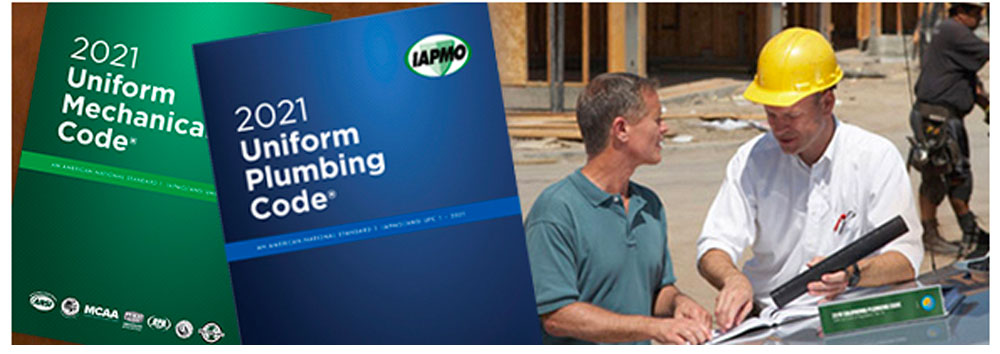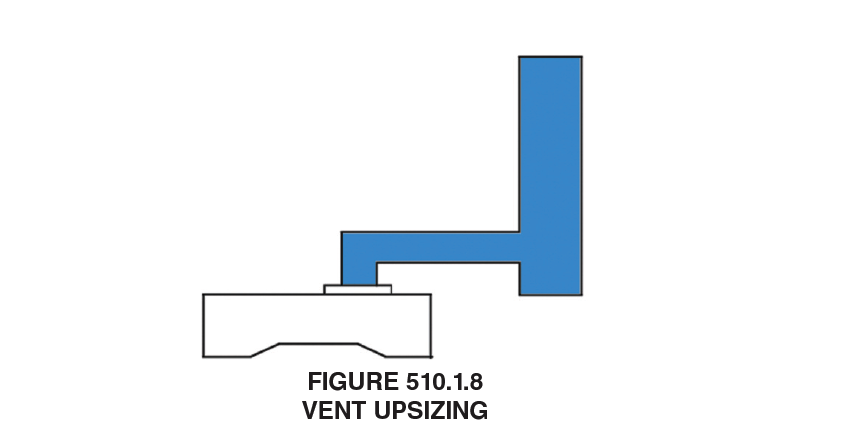December 7, 2023

From the 2021 UPC Illustrated Training Manual, Chapter 5, WATER HEATERS
The 2021 Uniform Plumbing Code Illustrated Training Manual is available for purchase here.
510.1.8 Vertical Vent Upsizing Using 7 x Rule. Where the vertical vent has a larger diameter than the vent connector, the vertical vent diameter shall be used to determine the minimum vent capacity, and the connector diameter shall be used to determine the maximum vent capacity. The flow area of the vertical vent shall not exceed seven times the flow area of the listed appliance categorized vent area, flue collar area, or draft hood outlet area unless designed in accordance with approved engineering methods. [NFPA 54:13.1.9]
In a vent system with a larger vent than the vent connector, the draft is limited by the small diameter of the connector (see Figure 510.1.8). Condensation will begin in the larger diameter. The maximum and minimum capacities must be determined accordingly. Practical limits exist as to how large the vertical vent may be relative to its source of vent gas flow; therefore, the flow area of the vent may not be more than seven times the flow area of the outlet of the appliance or draft hood.

A sudden large expansion of the vent system diameter at the vertical portion creates a pressure drop that may limit the draft and encourage condensation. This is the purpose of the limitations on vertical vent size versus vent connector size.
(This is not to be considered the official position of IAPMO, nor is it an official interpretation of the Codes.)

IAPMO
IAPMO develops and publishes the Uniform Plumbing Code®,the most widely recognized code of practice used by the plumbing industry worldwide; Uniform Mechanical Code®; Uniform Swimming Pool, Spa and Hot Tub Code®; and Uniform Solar Energy, Hydronics and Geothermal Code™ — the only plumbing, mechanical, solar energy and swimming pool codes designated by ANSI as American National Standards — and the Water Efficiency Standard (WE-Stand)™. IAPMO works with government, contractors, labor force, and manufacturers to produce product standards, technical manuals, personnel certification/educational programs and additional resources in order to meet the ever-evolving demands of the industry in protecting public health and safety.
Last modified: December 7, 2023
